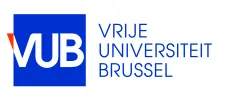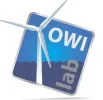
SeaFD | Realistic CFD wind load computations for offshore wind turbines
Context
The SeaFD project resides under the SIM program Material Durability for Off-Shore (MaDurOS). Within this program the project MaSiWEC aims to tackle a phenomenon that plagues the wind industry, namely the degradation of drivetrain bearing material. MaSiWec has identified that extreme weather conditions are at the source of the bearing lifetime reduction.
Objectives
The goal of SeaFD is to develop a new high-resolution weather model to predict high wind shear and rapid wind direction changes in offshore wind farms, potentially leading to failures of bearings in wind turbines. SeaFD will aim at extending the lifetime of the offshore wind turbines by:
- Identifying weather systems leading to degradation of drivetrain bearing material. Historical wind and wave data near the Norther wind farm will be analyzed and correlated to rotor torque, rotor bending and bearing stresses of the MaSiWEC turbine, in order to catalogue the weather events that plague the offshore wind energy sector.
- Creating a high-resolution weather model tuned for North Sea wind farms. To improve the understanding of extreme weather events and their interaction with wind farms, global historical weather datasets from ECMWF and NCAR will be coupled to mesoscale weather forecasting modelling (WRF), and to Large Eddy Simulation (LES), to compute wind fields approaching wind turbines, at turbine scales. Wind turbines will be modelled as actuator lines to include wind turbine wake effects, and to allow for simulating the wind loading per turbine.
- Validating the new weather model by measurements in the Norther wind farm. Several weather events will be selected by the steering group, recomputed by the new weather model and compared against field wind data.
- Predicting real-time wind turbine loading, using a lower-order model for wind park operation. With the help of the weather model, CFD RANS simulations, SCADA 1 sec data, LIDAR and wave buoy data, a reduced-order modelling for prediction of wind fields and wind turbine loading will be set up for each wind turbine using machine-learning approach. The resulting tool is aimed to be used for wind park operation.
Potential Impact/Utilisation
The new weather model developed within SeaFD is unique because it will allow prediction of future weather conditions at each rotor of a wind farm 36 hours ahead. The increase of resolution of the current operational weather forecasts by e.g. KMI, is done by CFD tools, already in use in the field of wind engineering for the design of bridges, high-rise buildings and in safety engineering for the prediction of the propagation of forest fires and toxic clouds.
The following types of utilization are possible and can further be developed in dedicated follow-up trajectories with wind farm operators, wind turbine manufacturers and software developers;
- Energy output for future wind farms based on reanalysis weather data from ECMWF or NCAR for any year from 1948 for NCAR and from 1979 until now for the ECMWF dataset.
- Risk analysis for future wind farms related to bearing failures based on reanalysis weather data from 1948 until present.
- Realtime weather predictions for each wind turbine and wind turbine wind loading in any wind farm in the world 1.5 days ahead. The level of detail obtained in these predictions depends on the advances obtained within the current project SeaFD in coupling Large Eddy Simulations to global weather predictions that are made available by NCAR.
Reference
- SIM SBO project within program Material Durability for Off-Shore (MaDurOS)
- Started: 01/04/2020, Duration: 48 months
- Total Budget: €1.639.204









